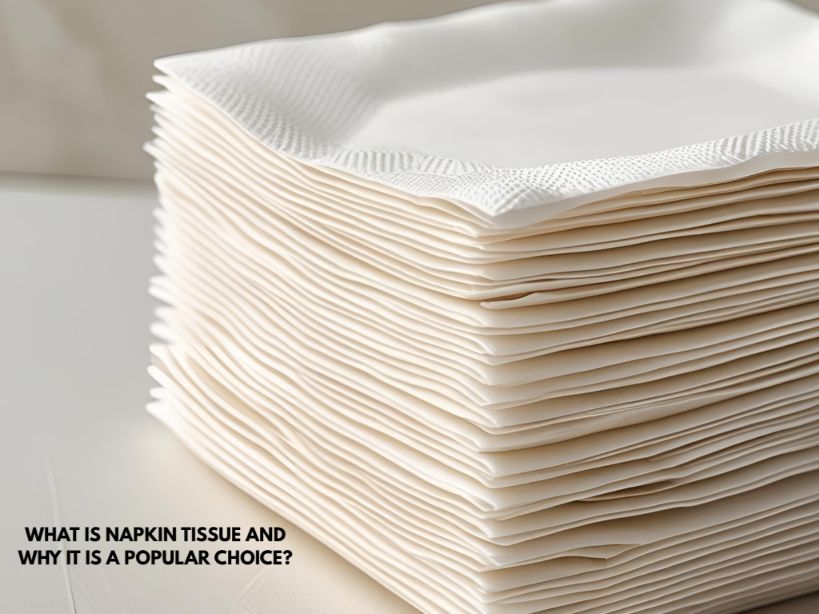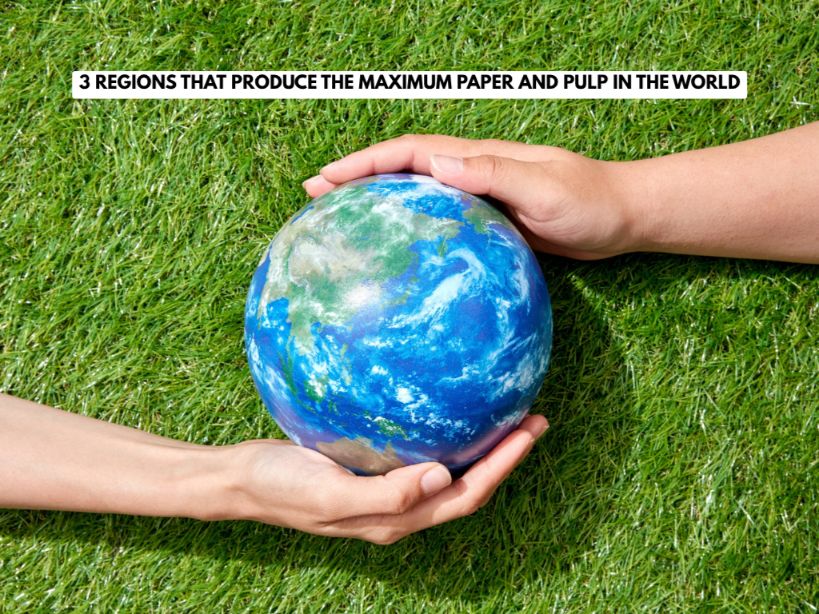What is Napkin Tissue and Why it is a Popular Choice?
‘Tissue paper’ encompasses a wide range of products, such as paper towels, toilet tissue, facial tissues, and Napkin tissue. Paper pulp (wood fiber) or recycled paper products such as cardboard, newspapers, or juice cartons are used to create it. A paper machine rolls the wet pulp into the desired thickness. Napkin tissues have become an indispensable part of our lives. We can find them everywhere, from our homes to restaurants, from Airports to Offices.
They have a GSM of 14.5 or greater, making them suitable for removing all sorts of liquid and dust. Its first documented use can be found in ancient China in 2 BC when the paper was invented. These small pieces of paper were offered when tea was served. Paper napkins were first used in 1887 by John Dickinson at his company’s party in the United States. In 1931, Scott Paper introduced paper napkins to the market, the first American company to do so. In addition to paper napkins, tissues and paper towels were also developed around this time, but it wasn’t until the 1950s that paper napkins became popular.
The process of making napkin tissues
Modern-day napkin tissue production has seen a lot of transformations over the many decades. Today napkin tissues are mass made in mills which are then distributed across the global market. The production of tissue napkins generally includes four main steps: Pulp & Dye, Pressing, Creeping, and Cutting.
- Pulp and Dye: The tissue napkin manufacturer first prepares the paper pulp using a mix of wood pulp and fiber. The paper pulp next is washed thoroughly with water and properly bleached. In the case of colored napkin tissues, dye is added to the pulp in this stage.
- Pressing: The pulp is pressed using a roller which makes the pulp completely dry and every bit of moisture has been drained. This also allows the paper sheet to be completely flat under the immense load of the rollers.
- Creeping: Next, the tissue napkin manufacturer uses extreme heat to dry out the paper even further before the sheet is cut into the required dimensions. This is a very important step as any residue moisture can compromise the quality of the final product.
- Cutting: After the sheet has completely dried out, the manufacturer uses mechanized blades to cut the sheet into the shape and size as prescribed. Finally, after the packaging has been done, these napkin tissues are packed and shipped for the consumers to buy off supermarket shelves.

Napkin tissue paper: The more hygienic option
It is convenient to use paper napkins because they eliminate the need to wash them and assure the user that their napkin will always be clean. Paper napkins are lightweight, so they can be carried effortlessly. Recent studies point to the fact that over 80 percent of the infections spread through our hands. And with the lessons learned from the pandemic, hygiene should be the priority.
Napkin tissues are no doubt one of the most hygienic options out there. How many times have you had to make the choice between paper towels or hand dryers in a mall washroom? Well, if you thought air drying is the best, you are absolutely wrong. Research shows that the abrasive action caused by rubbing the tissue napkin with the skin can be much more effective in removing bacteria and pathogens from your hands after washing them. Although air dryers might seem the trendier option, napkin tissues are generally the more hygienic option.
What makes napkin tissues so popular?
Versatility: Napkin tissues offer a wide range of uses for consumers. These wonderful products are used in several different settings. From restaurants to your favorite mall’s food court, these tissues are ubiquitous, making them one of the most versatile products for consumers.
Convenience: These small pieces of paper can easily be stored in a dispenser or kept directly on the table for use. Thanks to its small size and disposable nature, napkin tissues are a staple for every household.
Flexibility: Napkin tissues come in many different shapes, sizes, and colors. Users can choose as per their convenience.
Conclusion
Napkin tissues are one of the most multi-utilitarian objects found around the household. Coniferous Multitrade brings you a wide range of napkins tissues and other tissue products. Each of the products found in the catalog is made from responsibly sourced resources and with minimal carbon and plastic footprint. Head on to Coniferous Multitrade and get your hands on some of the best paper products.


